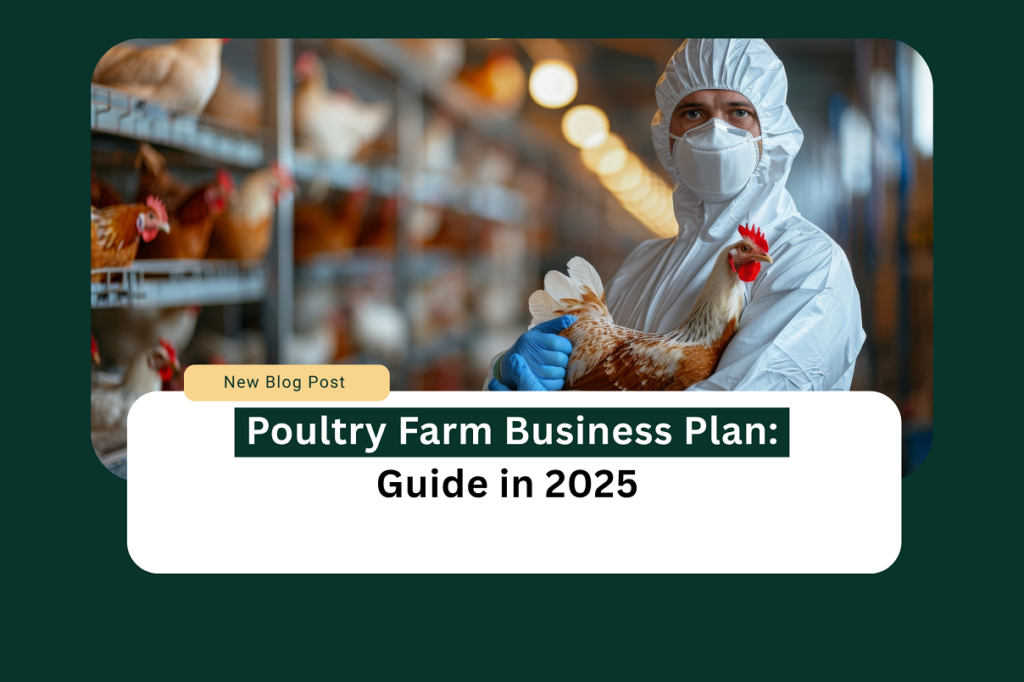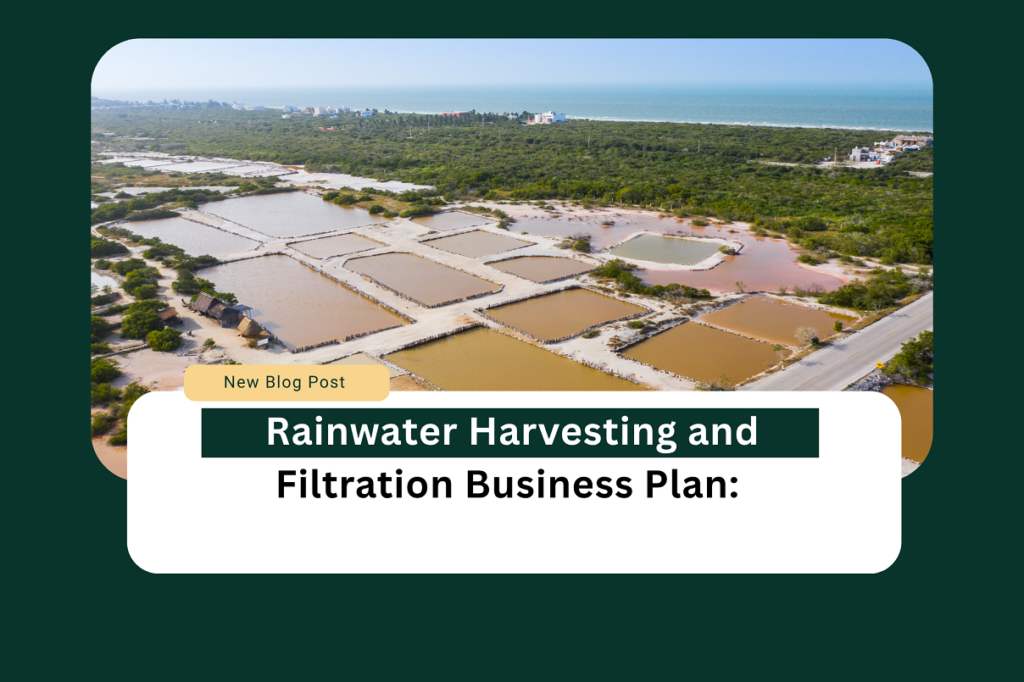Introduction
To start a poultry farm business you need both detailed planning and industry expertise together with strategic business execution. Your agricultural venture needs a detailed business plan for poultry farming which establishes everything including facility specifications and marketing approaches. The U.S. Department of Agriculture reports that poultry production reaches over $46 billion annually in the United States thus establishing the sector as a dependable segment of agriculture. This article provides detailed instructions to create an extensive poultry farm business plan which includes essential operational aspects and financial structures together with expansion strategies to build long-term success in the competitive but lucrative industry.
Understanding Market Analyses
Researching the market thoroughly must be your priority before ending your poultry farm business plan development. The USDA reports that chicken consumption has increased by 2.3% every year for the past ten years in the poultry industry. The analysis of present market trends enables you to select between broiler production layer production and specialty bird production based on consumer demands within your area.
Your business plan for a poultry farm must examine existing local competitors combined with potential customer groups and delivery networks. Commercial poultry farms need processor or wholesaler agreements to secure their market position while small-scale farms should prioritize selling directly to consumers through farmers’ markets and community-supported agriculture programs. A 2023 National Chicken Council report shows specialty and organic poultry products fetch higher prices in the market because consumers pay 35% more than standard products.
Production Models and Facility Requirements
The production model of your poultry farm business needs to be specified in your business plan. Commercial broiler operations dedicate themselves to producing meat chicken that reaches market weight within 6 to 8 weeks of its lifecycle. Layer operations generate eggs through hens that stay productive between 12 and 18 months. Specialty farms that focus on heritage breeds, organic birds, or free-range poultry need specialized management systems and particular farming facilities.
Your poultry farm business plan requires an essential element in facility design. Contemporary poultry houses should combine climate control systems with ventilation technology and optimized space allocation to fulfill animal welfare requirements. The Poultry Science Association reports that correctly designed housing systems lower mortality rates by 15% and improve feed conversion ratios by 8-10%. Your business plan must contain specifications about housing structures together with equipment requirements and technological integration, including automated feeding systems and environmental monitoring equipment at their respective costs.
Operational Procedures and Management
The business plan for poultry farming requires complete operational procedures that explain daily management activities and healthcare protocols and biosecurity measures. Your business plan must include detailed feeding programs and vaccination schedules alongside waste management protocols because the American Association of Avian Pathologists demonstrates that strong biosecurity measures lower disease outbreaks by 65%, which directly benefits your farm profitability. Modern poultry operations are adopting sustainable practices because the U.S. Poultry & Egg Association reports that 43% of commercial poultry farms either use litter-to-energy conversion systems or implement composting programs.
Financial Projections and Funding Strategies
Your poultry farm business plan must focus heavily on financial matters because this section will decide how easily you can obtain funding. Your startup costs should detail all expenses starting from land acquisition through building construction and equipment purchases and initial flock investment. The first-year monthly predictions should be detailed for operating expenses, which include feed, utilities, labor, veterinary services, and insurance, followed by annual projections for subsequent years.
Your poultry farm business plan should present revenue projections consisting of actual market prices and expected production volumes that account for seasonal trends. Commercial broiler operations that are well managed reach breakeven in 18 to 24 months, yet specialty operations need 24 to 36 months to reach profitability, although they generate higher profit margins, according to CoBank industry analysts. The financial projections need sensitivity analysis to show how operational stability will be maintained when facing market changes or production difficulties.
Marketing and Distribution Strategies
The business plan for your poultry farm requires precise strategies for marketing and distribution. Commercial operations establish long-term agreements with processors and distributors to gain stability, but these arrangements reduce their profit potential. Specialty farms with limited capacity establish multiple sales platforms which include customer transactions and restaurant collaborations and local distribution networks.
The business plan for specialty poultry markets should include information on certification requirements along with their associated expenses. Organic Trade Association shows that organic poultry fetches prices 75% above conventional rates yet certification adds 15-25% to production expenses. Your marketing strategy needs to develop branding methods together with promotional techniques and specific approaches for acquiring customers from your targeted audience.
Risk Management and Contingency Planning
A practical poultry farm business plan includes recognition of potential problems and establishes methods to handle risks. The poultry industry operates under multiple risks which include disease outbreaks together with feed price volatility and regulatory changes and market fluctuations. The Food and Agriculture Organization published research which demonstrates that poultry farms with robust biosecurity plans and multiple revenue channels become 40% more resistant to industry market declines.
Your business plan must include information about insurance requirements as well as emergency response plans together with financial backup systems. Successful poultry farmers establish emergency funds which support their operations for 3 to 6 months. Your business strategy should include vertical integration elements which allow you to produce, feed or process your products directly on your farm to enhance your supply chain control and minimize outside dependencies.
Conclusion
A properly designed poultry farm business plan functions as a strategic development tool while also presenting convincing information to potential financial backers. A properly developed poultry farm business plan lays down sustainable growth foundations through complete analysis of market opportunities combined with operational needs and financial projections and risk management practices.
We encourage you to share your experiences developing a poultry farm business plan in the comments below. Your feedback helps improve our resources, and sharing this article across your social media networks could provide valuable guidance to others considering this rewarding agricultural venture.
FAQ
What amount of capital does it require to establish a poultry farm?
The amount needed for starting a poultry farm depends substantially on operational size. A small poultry farm with 1,000 to 5,000 birds needs an investment between $50,000 to $150,000 whereas commercial facilities exceeding 50,000 birds require investments ranging from $1 million to $3 million. The main expenses in starting a poultry farm consist of land purchase and housing construction together with equipment procurement and flock acquisition and operational funds to support the first production cycle.
What documentation does a poultry farm need to operate?
A business license and essential environmental permits along with water usage rights and waste management permits and USDA/FDA food production registrations form the requirements for different locations. The management of large operations must conduct supplementary environmental impact assessments and create monitoring plans.
How profitable is poultry farming?
The profitability of commercial broiler operations ranges from 5 to 15 percent as management efficiency and market conditions determine the net margins. Specialty operations such as organic and pasture-raised farming generate margins between 20% and 35% however they maintain higher production expenses and lower total output. The majority of operations become profitable between 18 months and 36 months.
What represents the largest dangers which poultry farmers need to address?
The main risks in poultry farming consist of disease outbreaks together with feed price volatility and market fluctuations and regulatory changes and weather events that impact housing conditions. Risk management for poultry farming requires executing thorough biosecurity measures alongside extended contractual agreements and sufficient insurance protection.
Is it possible to operate a small-scale poultry farm while maintaining a part-time schedule?
Successful operations often start their journey as businesses which operate during part-time hours. Proper automation systems enable part-time management of small layer operations with 300-500 birds and specialty broiler production with 500-1,000 birds quarterly. Animal welfare needs daily checks together with productivity checks for monitoring purposes.
Read More : Personalized gifts and engraving business blueprint








